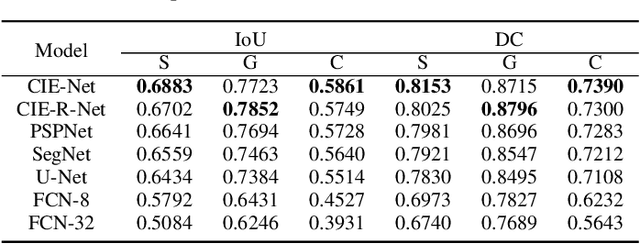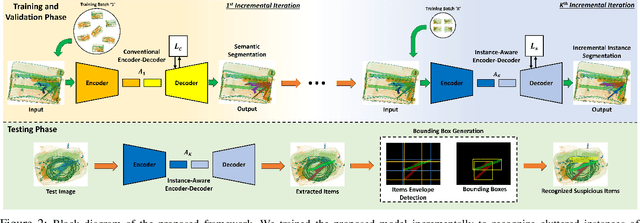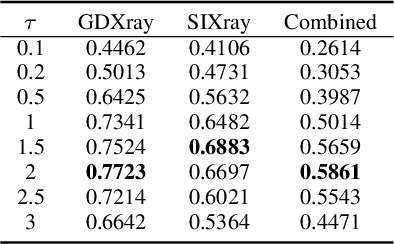A Novel Incremental Learning Driven Instance Segmentation Framework to Recognize Highly Cluttered Instances of the Contraband Items
Paper and Code
Jan 10, 2022



Screening cluttered and occluded contraband items from baggage X-ray scans is a cumbersome task even for the expert security staff. This paper presents a novel strategy that extends a conventional encoder-decoder architecture to perform instance-aware segmentation and extract merged instances of contraband items without using any additional sub-network or an object detector. The encoder-decoder network first performs conventional semantic segmentation and retrieves cluttered baggage items. The model then incrementally evolves during training to recognize individual instances using significantly reduced training batches. To avoid catastrophic forgetting, a novel objective function minimizes the network loss in each iteration by retaining the previously acquired knowledge while learning new class representations and resolving their complex structural inter-dependencies through Bayesian inference. A thorough evaluation of our framework on two publicly available X-ray datasets shows that it outperforms state-of-the-art methods, especially within the challenging cluttered scenarios, while achieving an optimal trade-off between detection accuracy and efficiency.
 Add to Chrome
Add to Chrome Add to Firefox
Add to Firefox Add to Edge
Add to Edge